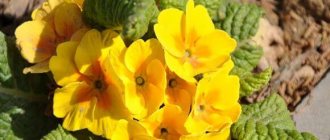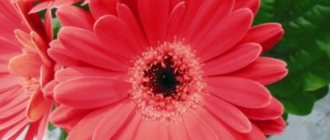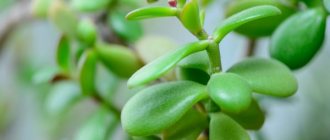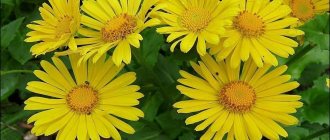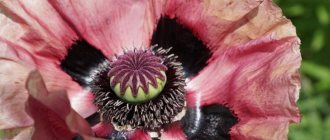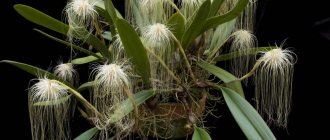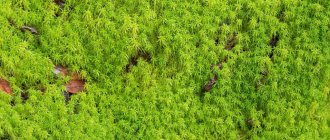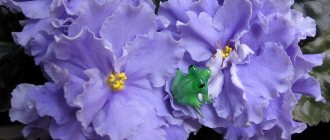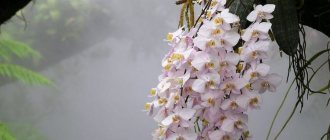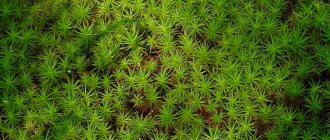The yellow water lily is a plant of incredible beauty. It grows on lakes, calm rivers, and in the backwaters of ponds. From time to time, this amazing flower can be found in the swamp, as it does not need clean water. Unfortunately, the yellow water lily is currently on the verge of extinction. The Red Book includes it in the list of rare plants.
Another name for the plant is “pod”. This is due to the interesting shape of the water lily's pistil. If you look closely, you can see its striking resemblance to a small jug. Many years ago, people used it to take water on long journeys, and sometimes even used it as a wallet. The leaf part of the white lily and the egg lily is surprisingly similar. These plants grow very often in a common body of water, and a non-specialist cannot immediately discern which leaves belong to the yellow water lily and which ones belong to the white lily. Only by looking closely can you find some difference between them, which lies in the cutout of the leaf near the petiole.
Yellow water lily: description
It is a perennial herbaceous plant. Belongs to the water lily family. Its rhizome reaches a length of 400 cm, large, fleshy, horizontal, covered with scars. The leaves are large, heart-shaped, oval, entire, long-petiolate, leathery. The flowers are solitary, floating on arrows, with yellow petals. The fruits are capsules with a large number of seeds. They ripen in mid-summer.
Diseases that the yellow egg capsule treats
If we name the diseases that the egg capsule can cure, then these are:
gastritis; uterine bleeding; CNS diseases.
Use the capsule with caution to treat enuresis in children
In addition, medications made from it can be used to correct the functions of the reproductive system. A particularly positive effect is observed when drugs are used to eliminate painful nocturnal emissions, as well as when it is necessary to alleviate the course of impotence and restore lost sexual desire. This plant also helps women who want to get rid of such a phenomenon in the female body as frigidity.
Blank
Healing preparations are made using the rhizomes of the plant. They are stored at the end of summer. Water lily rhizomes are washed, peeled, cut into small pieces and dried in the sun. They are left outdoors under a canopy or in ventilated rooms, spread out in a thin layer. The flowers are dried immediately at 50°C. But you need to take it into account when planning to use a plant such as yellow water lily for medicinal purposes - the Red Book includes it on the list of endangered plants.
Medicinal qualities of yellow capsule and contraindications
The healing properties of the yellow egg capsule are explained by the presence in its composition of chemical microelements and substances useful for the body. For example, it includes:
alkaloids; tannins; luteolin; sinapic acid; various resins.
It is necessary to take drugs from the capsule only as prescribed by a doctor.
In total, this plant may contain more than 50 useful substances, so it is necessary to take drugs from it only as prescribed by a doctor, who can accurately calculate the dosage and therapeutic effect of a particular collection or infusion. Generally speaking, yellow capsule can be used as a bactericidal, diuretic, analgesic, astringent, hypnotic and sedative. At the same time, both leaves and flowers, rhizomes, and seeds can be used as medicinal raw materials.
Usage
The drug "Lutenurin", which includes yellow water lily, is used topically to treat diseases of the skin, mucous membranes, as well as for trichomonas chronic and acute diseases.
Traditional medicine uses yellow water lily for skin diseases, fever, inflammatory processes in the gastrointestinal tract, and heavy menstruation.
There is an assumption that a decoction of rhizomes helps with impotence and frigidity. An infusion of the plant's flowers is used as a sleeping pill, sedative, and antipyretic. In addition, it is used for bruises and gouty, joint, and rheumatic pain.
Interesting Facts
It is believed that the plant was born 30 million years ago, during the Oligocene. There are some more interesting facts about the yellow egg capsule:
- In winter, all the beneficial substances are retained in the rhizome, thanks to which the plant begins to grow in the spring.
- The rhizome has many air channels that “capture” oxygen.
- The colorful plant is often overharvested and is on the verge of extinction in many areas.
- Egg-pod flowers smell of alcohol, which attracts pollinators.
- The rhizomes in their raw form are slightly poisonous, but after boiling they can even be eaten.
- The seeds of the plant are sometimes used as a coffee substitute.
- Among the people, all water lilies, including the water lily, are often called “overcome grass” - a remedy for all diseases, a talisman.
Reflections on names. Nymphea or water lily?
Let's continue our research. By the way, some may think that the purpose of my research in the field of names is instructive... - so, I want to sincerely dissuade you NOTHING My emotional message was outlined in detail in the previous article in the series “Reflections on Names”.
"Why?"
To the question “ Why did I start all this for myself?” I answered in the previous article (adding to emotions as an argument also such qualities as curiosity and tediousness ).
"For what?"
To the question “Why?” I will answer this way: to know more about the plants in your Garden, to call them by their own - THEIR - names!
Exactly for this same reason, I want to identify my other plants, I want to know my roses and perennials by name... Ads by
So a nymph? Or a water lily?
Today we will talk about aquatic plants.
Nymphea (photo from the author’s garden)
Nymphea - the same (photo from the author's garden) - I have only one for now
And first of all, I want you to rejoice with me today - today I made one small personal OPENING
A little preface
In two, literally, sentences and two, respectively, photos.
The fact is that I spent my childhood and youth in the Southern Urals, and there were a lot of aquatic plants in the local lakes, and they were all of only two types and colors - white and yellow (I’ll show them below in two photos from the Internet). Photo No. 1 (from the Internet). I was always sure that this white thing was a “water lily” (the word “nymphaeum” was then unattainably magical for me and was in no way associated with our Ural lakes - it came to me much later...) Photo No. 2 (from the Internet). I was always sure that this yellow thing was a “water lily”
My personal discovery
Thanks to the fact that I came up with these “Reflections on Names” for myself, exactly today I became an “expert” and am sharing my new knowledge with you (although, probably, most of you knew this very well before me, and for you it was not no secret) - rejoice with me for the company
So. Photo No. 1 - nothing more than Water Lily , or Nymphaea (lat. Nymphaéa), - a genus of aquatic plants of the water lily family (Nymphaeaceae), which includes about 50 species - a plant with large heart-shaped oval or heart-shaped rounded leaves floating on the water like flowers floating on the water
Photo No. 2 - undoubtedly the yellow water lily , or yellow water lily (lat. Núphar lútea) is a perennial aquatic plant; species of the genus Capsule of the water lily family (Nymphaeaceae)
PS A big bonus and consolation for me was that my personal misconception was completely listed on Wikipedia: “Often a water lily is mistakenly called a water lily; At the same time, the white water lily is called a water lily.”
There were and still are many fairy tales, legends and beliefs around the “water lily” (you can read them on the Internet, I will not retell them here).
NOTE: here is a lotus, by the way, a plant from a completely different family, although they are often literally listed separated by commas. Lotus (lat. Nelúmbo) is a genus of dicotyledonous plants, the only representative of the Lotus family (lat. Nelumbonaceae) Let's stop thinking and just admire this amazing creation nature - "water lily"
Nymphea from the garden of nymphea grower Andrey - he has a small nymphaeum nursery right in our SNT... There...
This is what Andrey’s Siberian nymphs look like
My pearly modesty... (photo from the author's garden) She... (photo from the author's garden) And again... (photo from the author's garden)
...And you can also see how my little pond is being prepared for winter here...
Chemical composition of yellow egg pod
The flowers of the yellow capsule contain cardiac glycosides, like foxglove. Fruits contain up to 45% starch and tannins. Tannins, bitter, resinous substances, starch, alkaloids, which in addition to nitrogen include sulfur: nuflein, nufaridin, nufarin, lutecurin and others (the total amount of alkaloids in the raw material is not less than 0.35%), as well as sugars, were found in the rhizomes and roots. and organic acids.
Tannids (about 6%), phytosterols (sitosterol, stigmasterol and their glycosides), sucrose, a lot of starch (up to 20%), vitamin C, carotene were also found in the rhizomes.
Recipes
- To treat hair loss and slow hair growth, you can prepare a decoction of the plant's root in beer. You should take 0.5 liters of beer and place 20 g of dry roots there. Cook for ten minutes over low heat. After the broth has cooled, you should strain it. For one or two months, you need to wash your hair with the broth once or twice a week.
- To alleviate the condition of rheumatism, gout and bruises, prepare 50 g of egg capsule flowers. They need to be placed in cotton or gauze cloth and tied. The resulting bag is then placed in boiling water for two or three minutes. Then it should be applied to the affected parts of the body.
Recipes for using yellow egg capsule in collections
The collections are prepared as follows: - no matter what - pour 10 grams of the collection into a third of one liter of boiling water and leave it for a couple of hours, drink it all 3 times before meals.
Colpitis, salpingoophoritis, endometritis
Amenorrhea
Asthenia (hypersthenic form)
Contraindications and possible side effects of yellow capsule
It should be remembered that the yellow capsule is a poisonous plant.
It should be taken for treatment only as prescribed by a doctor, strictly observing the indicated doses and duration of treatment. There are known cases of children being poisoned by the rhizomes of the yellow egg capsule.
Poisoning is manifested by vomiting, diarrhea and prolonged sleep.
